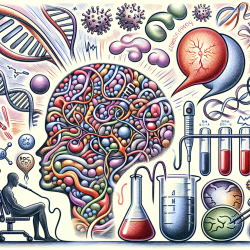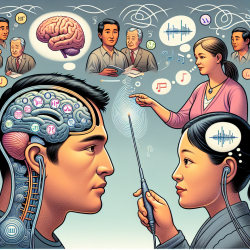Introduction
Williams-Beuren Syndrome (WBS) is a rare genetic disorder characterized by a unique set of cognitive and behavioral traits. The disorder results from the deletion of approximately 25 genes on chromosome 7q11.23. Recent research has leveraged human induced pluripotent stem cells (iPSCs) to model the neuronal phenotype of WBS, providing insights into the gene dysregulation and electrophysiological abnormalities associated with the syndrome. This blog explores how these findings can be applied to improve therapeutic outcomes for children with WBS, particularly in speech and language therapy.
Research Insights
The study titled "Human induced pluripotent stem cell derived neurons as a model for Williams-Beuren syndrome" by Khattak et al. (2015) has demonstrated that iPSC-derived neurons from WBS patients exhibit significant alterations in action potential dynamics and gene expression profiles. These neurons show prolonged repolarization times and deficits in voltage-activated potassium (K+) currents, indicating a disruption in neuronal signaling pathways.
Gene expression analysis revealed downregulation of genes involved in neurotransmitter receptor activity and synaptic assembly, which are critical for cognitive and behavioral functions. The study also highlighted the potential of iPSC-derived neurons to serve as a valid model for studying complex neurological phenotypes in vitro.
Implications for Practitioners
For speech-language pathologists and educators working with children with WBS, understanding the underlying neuronal dysfunctions can guide the development of more targeted interventions. Here are some practical applications:
- Tailored Speech Therapy: Recognizing the specific neuronal deficits can help in designing speech therapy programs that address the unique cognitive and linguistic challenges faced by WBS patients.
- Collaborative Interventions: Working with a multidisciplinary team, including neurologists and geneticists, can enhance the understanding of each child's specific needs and improve therapy outcomes.
- Continued Research: Encouraging further research into iPSC models can lead to the discovery of new therapeutic targets and interventions that can be integrated into practice.
Encouraging Further Research
Practitioners are encouraged to stay informed about ongoing research in the field of neurodevelopmental disorders. Collaborating with research institutions can provide access to the latest findings and methodologies, which can be translated into practice. Moreover, contributing clinical insights to research can help refine models and therapeutic approaches.
Conclusion
The use of iPSC-derived neurons to model WBS offers a promising avenue for understanding the molecular and cellular underpinnings of the disorder. By integrating these research insights into clinical practice, speech-language pathologists can enhance the effectiveness of interventions for children with WBS. Continued collaboration between researchers and practitioners is essential for advancing therapeutic strategies and improving patient outcomes.
To read the original research paper, please follow this link: Human induced pluripotent stem cell derived neurons as a model for Williams-Beuren syndrome.










